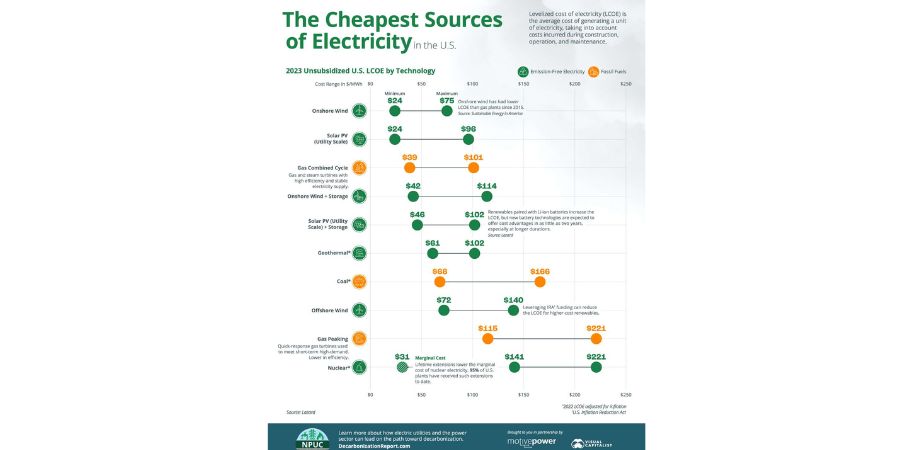
In 2022, the U.S. electricity sector’s reliance on fossil fuels resulted in a staggering 1,539 million tonnes of CO2 emissions.
With the urgent need to decarbonize, however, the question remains: can the transition from fossil fuels to emission-free electricity sources, such as solar, wind, and nuclear power, be accomplished in a financially viable manner?
In this graphic sponsored by the National Public Utilities Council, we seek answers to that question by visualizing the 2023 levelized costs of electricity of various technologies in the U.S., as calculated by Lazard.
Levelized cost of electricity (LCOE) is a metric used to assess the cost of generating electricity from a specific power source over its lifetime.
The measure takes into account all of the costs associated with building, operating, and maintaining a power plant, as well as the amount of electricity the plant is expected to produce over its lifetime.
LCOE is a comprehensive way to compare the costs of various electricity generation technologies. It’s also worth mentioning, however, that there is a substantial amount of tax subsidies available for clean electricity generation in the U.S., including the $161 billion in clean electricity tax credits in the Inflation Reduction Act (IRA).
By leveraging these funding opportunities, the LCOE of renewables, nuclear power and energy storage systems has the potential to fall even further, bolstering their competitive edge in the market.
Sign up for the CREATE Newsletter and stay updated on the latest information in Renewable Energy Education.
Recent News
Copyright @ 2024 Center for Renewable Energy Advanced Technological Education
This material is based upon work supported by the National Science Foundation under Grant #2201631. Any opinions, findings, and conclusions or recommendations expressed in this material are those of the author(s) and do not necessarily reflect the views of the National ScienceFoundation.